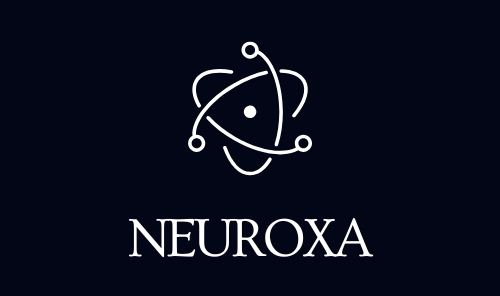The shift from legacy machine translation (MT) to modern Multilingual LLMs represents a qualitative, not just quantitative, change. Older MT systems often relied on statistical or rule-based models that produced accurate but robotic, context-poor literal translations. The current generation of AI uses cross-lingual transfer learning, where models trained extensively on high-resource languages (like English) can leverage that knowledge to quickly and accurately generate text in dozens of lower-resource languages.
This results in high-fidelity localization, often referred to as transcreation. The AI doesn’t merely translate the words; it adapts the message to the target culture, preserves the intended tone and sentiment, and incorporates local idioms.
Beyond Literal Translation
A single, powerful LLM instance can act as a Global Content Engine because it is trained on massive, diverse datasets that include nuance and context. This allows the AI to:
- Adapt Tone: Instantly switch a message from formal legal language in German to a friendly, conversational style in Brazilian Portuguese, adhering to a defined brand style guide.
- Handle Complex Syntax: Manage the challenging grammar and character complexities of languages like Japanese or Amharic with unprecedented fluency.
- Ensure Consistency: Maintain consistent terminology across all languages, critical for technical documentation and brand messaging, overcoming the variability inherent in using hundreds of different human freelancers.
This technological foundation is what enables the truly “instant” aspect of global scaling, unlocking simultaneous market entry instead of the traditional phased rollout.
2. Transforming Global CX: Real-Time, Multilingual Service
The most immediate and impactful business case for Multilingual AI is the transformation of the global customer experience (CX). By integrating LLMs into help centers and communication channels, organizations can provide true 24/7/365 support in virtually any language spoken by their customer base without the need for vast, distributed, and expensive human call centers.
Measurable Impact on Core Metrics
The benefits of AI-powered multilingual support are directly visible in critical customer metrics, as shown by leading platforms:
| Metric | Improvement with Multilingual AI (2025 Data) | Business Impact |
| Operational Cost Reduction | 40% to 70% reduction in support costs | Massive savings compared to hiring human agents for every language. |
| CSAT / Loyalty | +10% to +15% average increase in CSAT; 70% more likely to remain loyal | 74% of consumers prefer to buy products when information is in their native language. |
| Response Time | 50% to 70% reduction in average response times | Reduces customer abandonment and improves First Contact Resolution (FCR). |
| Query Automation | Up to 80% of routine queries handled by AI | Frees human agents to focus on complex, emotional, or high-value issues. |
AI agents provide instant answers in the customer’s language, drastically reducing Time to Resolution (TTR). Furthermore, the technology enables fluid language switching, allowing a customer to start a chat in Spanish and switch midway to English without the AI agent missing a beat, ensuring a seamless and efficient journey. This means a single human agent can effectively communicate with customers across dozens of languages when necessary, handling multilingual ticketing and triage that was previously impossible.
3. Content Velocity: The Global Marketing Machine
In marketing, speed is competitive advantage. Traditional localization workflows were notorious for their lag time, often leaving international markets weeks or even months behind the primary market content. Multilingual GenAI turns the localization process from a sequential burden into a parallel, instantaneous opportunity.
Scaling Content Production and Localization
Companies can now generate and localize vast quantities of content—from marketing copy to technical manuals—at a pace that allows for true global simultaneous launch.
- Rapid Creative Localization: AI-powered localization tools can cut the time-to-market for product content and campaigns by up to 80%. For example, L’Oréal reduced product content development cycles by 60%, enabling faster launches and seasonal adaptations across over 25 languages.
- SEO at Scale: AI generates SEO-optimized articles and product descriptions tailored to the specific search behavior and keywords of each local market. This allows an enterprise to build a deep, multilingual content library that captures organic traffic globally, treating each language as a distinct, addressable market of one.
- Product Information Management (PIM): For companies with large, diverse product catalogs (e-commerce, manufacturing), AI instantly generates and updates product descriptions, warnings, and compliance information across dozens of languages, solving a massive data management challenge.
- Cost Efficiency: AI-driven quality assurance (QA) tools can reduce localization costs by up to 60% and reduce human translation errors by up to 50%, ensuring both scale and accuracy are maintained.
This new content velocity transforms the global marketing organization, shifting the focus from managing translation vendors to optimizing the Global Content Hub—a single source of truth that is instantly adaptable and deployable across any linguistic market.
4. The Integration Challenge: Fine-Tuning for Cultural Alignment
While the power of Multilingual AI is transformative, simply plugging a foundational model into a global workflow is insufficient. The final, critical stage is integration, which requires fine-tuning and a vital human safety net to ensure cultural alignment and compliance.
Addressing Low-Resource Language Limitations
The core challenge stems from the fact that most foundational LLMs are trained primarily on high-resource languages (English, Spanish, Mandarin, etc.). When dealing with low-resource languages (e.g., Igbo, Swahili, or specific regional dialects), the models can suffer from what researchers call the “harmfulness curse” or “relevance curse,” meaning they are more likely to generate biased, harmful, or simply nonsensical content due to insufficient training data.
Strategies for Quality and Compliance
To overcome these challenges and ensure high quality and compliance across all languages, organizations must implement robust fine-tuning and governance strategies:
- Domain-Specific Fine-Tuning (LoRA): Using Parameter-Efficient Fine-Tuning (PEFT) methods like LoRA (Low-Rank Adaptation), businesses can efficiently train the base model on proprietary, domain-specific data (e.g., medical terminology, legal contracts, or brand glossaries) in all target languages. This improves accuracy and consistency without incurring the astronomical costs of full model retraining.
- RAG (Retrieval-Augmented Generation): Integrating RAG ensures that the AI’s responses, regardless of language, are anchored to specific, verified internal documents (like the company’s knowledge base or legal filings), preventing factual or domain-specific errors.
- Human-in-the-Loop (HITL) for Safety and Compliance: For high-risk, high-impact content—such as legal disclaimers, medical information, or high-profile marketing slogans—a Human-in-the-Loop review process is non-negotiable. Linguistic experts provide the final, empathetic review that ensures the AI’s output adheres to local compliance laws, cultural sensitivities, and the core emotional intent of the message. This balanced approach ensures speed and scale while preserving critical accuracy and trust.
The advent of Multilingual AI has eliminated language as a scaling constraint. The challenge is no longer can a company communicate in 50+ languages instantly, but how well that communication aligns with local compliance and cultural context. By strategically implementing LLMs for scale and retaining human expertise for final alignment, organizations can leverage GenAI to drive global growth, turning every language into a new avenue for customer loyalty and content advantage.
Source List
- Fini Labs: 7 Best Multilingual AI Support Platforms for Global Enterprises in 2025 (October 2025)
- Callnovo: Multilingual Customer Care in 2025: How Global Brands Build Trust Through Language-Centric Support (April 2025)
- XTM Cloud: Must-Have AI Localization Guide 2025 (October 2025)
- Sobot: AI Customer Service Case Studies Driving Change in 2025 (August 2025)
- DigitalDefynd: 25 Generative AI Case Studies [In Depth] [2025] (March 2025)
- arXiv/GoCodeo: Fine-Tuning LLMs for Low-Resource Languages: Challenges & Opportunities (June 2025)









